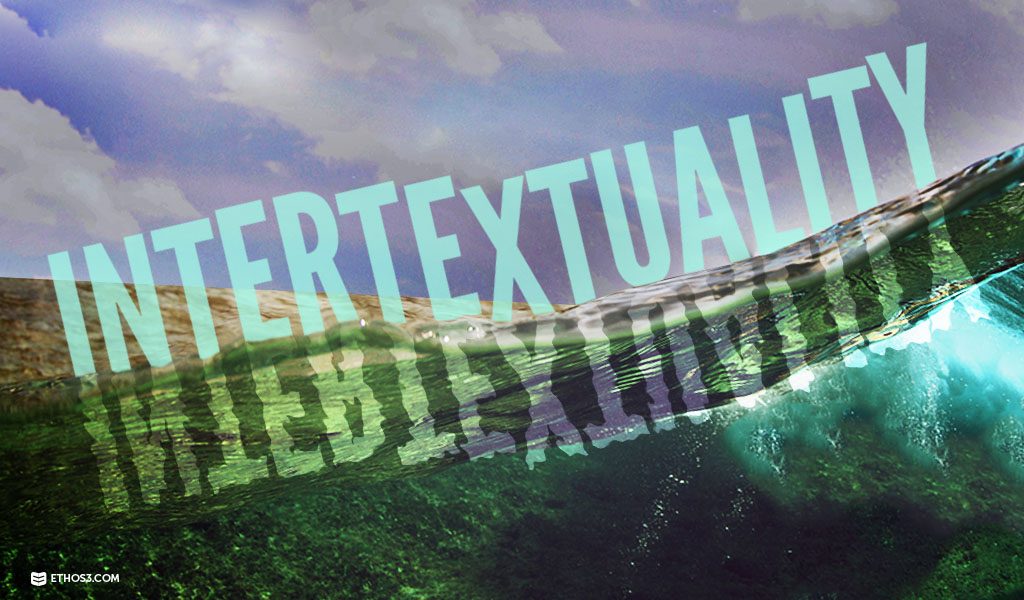I recently learned the term intertextuality. It includes literary concepts that we are all familiar with, but I never knew that there was a specific name for it. Originally coined by author Julia Kristeva, intertextuality is defined as “the shaping of a text’s meaning by another text.” This happens every time a previous work is quoted, or a concept is repurposed. Kristeva’s theory “insists that a text cannot exist as a self-sufficient whole, and so, that it does not function as a closed system.” This means that every story has elements of, is inspired by, or directly incorporates a previously written story.
Using intertextuality can change the meaning of one or both texts, and requires a general understanding of the historical context. This concept can be, and has been, used in presentations and speeches, maybe without you realizing it. I will get more into those details later. First, let’s look at what intertextuality does.
Using Intertextuality in Presentation Content

The University of Wisconsin-Madison describes intertextuality as a “reference to or application of a literary, media, or social text within another literary, media, or social text.” With that said, it has three functions and three effects.
Comparison:
The first function of intertextuality is comparison. Putting two texts together in one work, the reader will compare text A (the story he or she has been reading) to text B (the story or quote the author plugs into their story). The reader must use their knowledge of text B from its original form and compare how it is being used in text A. Does text B have a new meaning? Does the storyline in text A change because of text B? Do both text A and text B take on new meanings?
Dialogue:
The UW Madison article describes the two texts used in intertextuality as having a conversation between each other. This idea is a bit complex, but what it means is both text A and text B have their own narrative; when text B becomes a part of text A, the narrative from text B can be incorporated into the narrative of text A.
Destabilization:
Intertextuality can be used to shake up a storyline as well. A reader will be going along with the story, until the author introduces text B to change the reader’s understanding. This is like a plot twist but with the inclusion of a pre-existing work. For example, if you have seen the new Star Trek movies, in Star Trek Into Darkness, when Benedict Cumberbatch’s character reveals himself to be Khan, the viewer immediately knows he is the villain who killed Spock’s character in the original series, so they can expect some similar destruction to occur at some point in the film.
Those are the three functions of intertextuality. Let’s look at three effects it has on the reader:
Transformation of Text A: the reader’s understanding of text A will be changed because of the author’s reference to text B.
Transformation of Text B: the reader’s understanding or knowledge of text B will change after reading it in regards to text A.
Reinterpretation of Both: the reader’s understanding of both text A and B will change.
Those are the effects of intertextuality. Here are some examples of this concept used in literature, film, and speeches.

In Literature:
There are many examples of intertextuality in literature, since it is a literary device. One well known example of this is the C.S. Lewis novel The Lion, the Witch and the Wardrobe. Lewis used the story of the crucifixion of Jesus Christ from the New Testament of the Bible, and used that theme of religion, evil, innocence and redemption in his work of fiction.
In Film:
The vlogger Nerdwriter does an interesting breakdown of intertextuality as it appears in film. He defines intertextuality as “objects, people, or situations explicitly meant to trigger an emotional response.” He uses examples like the rose in the live-action remake of Beauty and the Beast, or spaceships and characters from the original Star Wars trilogy appearing in 2015’s Star Wars: The Force Awakens.
In Speeches:
One of the most famous speeches in American history used intertextuality. Martin Luther King Jr. used themes and concepts from Abraham Lincoln’s, “Gettysburg Address” in his, “I Have a Dream” speech.
Five score years ago, a great American, in whose symbolic shadow we stand today, signed the Emancipation Proclamation. This momentous decree came as a great beacon light of hope to millions of Negro slaves who had been seared in the flames of withering injustice. It came as a joyous daybreak to end the long night of their captivity. – Martin Luther King Jr. “I Have a Dream”
Four score and seven years ago our fathers brought forth on this continent, a new nation, conceived in Liberty, and dedicated to the proposition that all men are created equal. – Abraham Lincoln “Gettysburg Address”
More about the literary devices in “I Have a Dream” here: Using Literary Devices in Presentations
Using Intertextuality in Presentations
Presenters can use intertextuality in their presentations, most of them already do without noticing it. Presentations that have a quote in the beginning, middle or end; or presentations that use a story to prove a point; that is intertextuality at work.
Quotes
Using a quote to open or close a presentation is a great way to engage your audience. They are memorable, inspiring, and can illustrate the entire concept of your presentation in a few words. We have resources you can use to create an empowering presentation with quotes.
21 Brilliant Quotes to Start Your Presentation
Inspirational Quotes for Presentation from Aristotle
Our Favorite Presentation Quotes
Stories
Ethos3 is a believer in the power of stories. Personal experiences can be instruments in making an impact on your audience. But drawing inspiration from historical events can have the same impact. One great example of this is in Steven Spielberg’s Jaws. Robert Shaw’s Quint gives a chilling speech about the bombing of the USS Indianapolis. While his speech is dramatic, the majority of the details are accurate.
One major issue that you will want to avoid with intertextuality is plagiarism. Make it clear to your audience that you are using work that was created by someone else. Failure to do so can result in legal action and an embarrassing moment.
Intertextuality is one of the many literary tools you can use to elevate a presentation. Many presenters already use this concept. Now you know what it is called! So, go forth with your inspiration and allow your presentation to be creative and dynamic with the help of other genius storytellers.